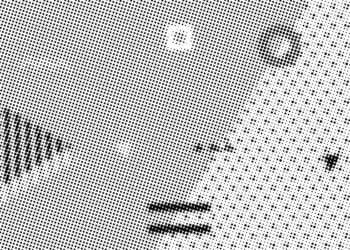with co-author Mehreen Rasheed
In the wake of the Wells Fargo scandal related to the creation of millions of unauthorized customer accounts, questions have once again been raised regarding how federal regulators can better and more efficiently protect whistleblowers.
Last September, bank regulators discovered that Wells Fargo had created over 2 million accounts without customer consent or knowledge between May 2011 and July 2015. The bank paid $185 million in civil fines. Wells Fargo employees began creating fake accounts due to extreme pressure from management, including threats of termination, to meet high sales quotas. Many of those who complained or reported the activity were fired. Some such terminated employees filed complaints alleging retaliation for blowing the whistle on wrongdoing.
Emerging reports indicate that swifter investigation and processing of whistleblower complaints could have brought satisfaction to the whistleblowers’ cases and uncovered the scandal earlier. As early as 2009, former Wells Fargo employees began filing complaints related to the creation of unauthorized accounts with the Department of Labor Occupational Health and Safety Administration (OSHA), the agency responsible for investigating complaints of whistleblower retaliation brought under various statutes. Former employees reported being fired and otherwise retaliated against after reporting the wrongdoing. As of early October 2016, OSHA had not closed 34 of the 91 whistleblower retaliation complaints it had received from Wells Fargo employees since 2002, although the number of complaints related to the current scandal remains unclear.
Delays and long waits for complainants are common given the breadth of OSHA’s mandate and the volume of whistleblower complaints filed. OSHA’s Whistleblower Protection Program is the first responder for whistleblower complaints brought under 22 federal statutes across various industries, including the Consumer Financial Protection Act of 2010 (CFPA), part of the Dodd-Frank Act. Last year alone, OSHA received over 3,000 whistleblower complaints, and this year’s number is likely to be greater still. The workload, however, is borne by only 88 full-time investigators in OSHA’s 10 regional offices nationwide.
Whistleblowers typically file complaints with OSHA after experiencing an adverse employment action as a result of opposing or refusing to take part in their employer’s wrongdoing. When OSHA receives a complaint, it must conduct an investigation within a specified 30-, 60- or 90-day time limit, depending on the statute implicated. Based on the investigation, OSHA will either dismiss the complaint or issue an order requiring the employer to take some remedial action. In some cases, OSHA also sends a copy of the complaint to the relevant regulatory agency to open their own investigation into the substance of the whistleblower’s complaint. Under the CFPA, OSHA is required to notify the Consumer Financial Protection Bureau.
Under-Resourced and Backlogged
Criticism of OSHA’s inadequate resources and slow-moving pace is not new. The agency has undergone at least five internal and external reviews in the last five years, all of which have found that OSHA’s whistleblower program was understaffed and lacked resources to adequately investigate cases.[1]
Last year, the Department of Labor (DOL) Office of Inspector General (OIG) again reviewed OSHA’s whistleblower program. While OSHA had made significant strides in conducting sufficient investigations, the increasing backlog continued to be a problem. The OIG found that OSHA did not complete 72 percent of investigations within the statutorily prescribed time limits. Investigators missed deadlines by an average of 163 days — a rate that had grown in the last five years—due in part to a failure to promptly assign cases to investigators.
Significantly, the agency often failed to share the substance of the whistleblower’s complaint with the federal agencies responsible for enforcement, despite a statutory mandate in some cases to do so. According to the report, OSHA lacked a mandatory and formal process to communicate the substance of the reports with these agencies. OIG’s recommendations included a call for better oversight of investigators, subject-matter training and a formal process to report information to external agencies in a timely fashion.
Last September, DOL Secretary Thomas Perez said that the department would again be conducting a “top-to-bottom” review of the prior Wells Fargo complaints.
The Road Ahead
If the years of audits and reviews make anything clear, it is that OSHA is in need of sufficient resources and a robust system to ensure streamlined and thorough investigations from start to finish, as well as organized and timely communication with other federal agencies. Members of Congress made headlines with their rebukes of Wells Fargo for the recent scandal, and of OSHA for its failings, but this outcry should also act as an incentive for Congress to ensure that OSHA and other regulators have adequate funding and resources. OSHA and other agencies must also ensure better communication in order to seize the first possible opportunity to uncover and stop wrongdoing.
With a new administration and session of Congress on the horizon, the future of whistleblower protection is unclear. Some have speculated that President-elect Trump’s administration may attempt to eliminate OSHA’s jurisdiction over some of the 22 statutes it oversees, or increase the burden of proof whistleblowers must meet. It’s also possible that whistleblower protections and oversight will be strengthened to better protect against the kinds of fraud, waste and abuse these statutes were designed to prevent. While the direction of the new administration and Congress has yet to be seen, it is fairly certain that changes will come.
[1] Dep’t of Labor Office of the Inspector General, 02-15-202-10-105, OSHA Needs to Continue to Strengthen Its Whistleblower Protection Programs (2015), https://www.oig.dol.gov/public/reports/oa/2015/02-15-202-10-105.pdf; Dep’t of Labor Office of the Inspector General, 02-10-202-10-105, Complaints Did Not Always Receive Appropriate Investigations Under the Whistleblower Protection Program (2010), http://www.oig.dol.gov/public/reports/oa/2010/02-10-202-10-105.pdf; U.S. Gov’t Accountability Office, GA0-10-722, Whistleblower Protection: Sustained Management Attention Needed to Address Long-Standing Program Weaknesses (2010), http://www.gao.gov/new.items/d10722.pdf; U.S. Gov’t Accountability Office, GA0-09-106, Whistleblower Protection Program: Better Data And Improved Oversight Would Help Ensure Program Quality And Consistency (2009), http://www.gao.gov/assets/290/285189.pdf.



 Lisa J. Banks is a founding partner with the whistleblower and employment law firm
Lisa J. Banks is a founding partner with the whistleblower and employment law firm 









